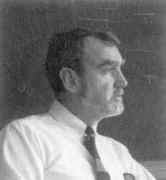Person: Langlands, Robert Phelan

Robert P Langlands is a Canadian mathematician who works in representation theory and number theory.
Mathematical Profile (Excerpt):
- Langlands then studied at Yale University for his doctorate.
- The first part was published in the Canadian Journal of Mathematics, but the second was published only as an announcement in the Proceedings of the National Academy of Sciences of the USA.
- It nevertheless had the good fortune to be taken seriously by Derek Robinson, who incorporated some of the results into his book on Elliptic Operators and Lie Groups.
- Appointed to Princeton as an instructor after completing his doctoral studies, Langlands taught there for seven years and was promoted to associate professor.
- He spent 1964-65 at the University of California, Berkeley as a Miller Foundation Fellow and an Alfred P Sloan Fellow.
- Then in 1967 he returned to Yale University as a full professor.
- However Langlands spent 1967-68 visiting in Ankara, Turkey having an office next to that of Cahit Arf.
- After five years at Yale he returned again to Princeton, this time as professor of mathematics at the Institute for Advanced Study.
- He has remained at the Institute for Advanced Study since his appointment there in 1972.
- In 1988 Langlands received the National Academy of Sciences Award in Mathematics.
- He was the first recipient of this award which was established by the American Mathematical Society.
- extraordinary vision that has brought the theory of group representations into a revolutionary new relationship with the theory of automorphic forms and number theory.
- Let us explain a little of Langlands' work which led to this award.
- As soon as he had completed his doctoral work, Langlands began to work on automorphic forms.
- In a remarkable paper he applied recent results by Harish-Chandra to obtain a formula for the dimension of certain spaces of automorphic forms.
- Then, over the next couple of years, he produced deep results on Eisenstein series and went on to apply Eisenstein series to prove a number theory conjecture due to Weil.
- In 1967 he wrote a letter to Weil which contains profound mathematical ideas which continue to drive a whole area of mathematical research.
- The letter was 17 pages hand-written and sent in January 1967.
- It sketched what soon became known as "the Langlands conjectures".
- Weil had the letter typed and this typed version circulated widely among mathematicians interested in the topics.
- a collection of far-reaching and uncannily accurate conjectures relating number theory, automorphic forms, and representation theory.
- Theses have formed the core of a program still being carried out, and have come to play a central role in all three subjects.
- Other letters of Langlands also proved remarkably important.
- While he was in Ankara in 1967-68 he wrote to Serre with ideas which would eventually be formulated as the Deligne-Langlands conjecture; this was proved eventually by Kazhdan and Lusztig.
- The National Academy of Sciences Award in Mathematics which we referred to above is certainly not the only award which Langlands has received for his work.
- He received the Cole Prize in Number Theory from the American Mathematical Society in 1982 for his pioneering work on automorphic forms Eisenstein series, and product formulae.
- More recently he shared the 1995-96 Wolf Prize in Mathematics with Wiles.
- path-blazing work and extraordinary insights in the fields of number theory, automorphic forms, and group representation.
- In 2015 Langlands was elected to Honorary Membership of the London Mathematical Society in its 150th Anniversary year.
- The deep results and visionary conjectures of the Langlands Programme relate the core themes in number theory and representation theory.
Born 6 October 1936, New Westminster, British Columbia, Canada.
View full biography at MacTutor
Tags relevant for this person:
Prize Abel, Origin Canada, Prize Shaw, Prize Wolf
Thank you to the contributors under CC BY-SA 4.0! 

- Github:
-

- non-Github:
- @J-J-O'Connor
- @E-F-Robertson
References
Adapted from other CC BY-SA 4.0 Sources:
- O’Connor, John J; Robertson, Edmund F: MacTutor History of Mathematics Archive
